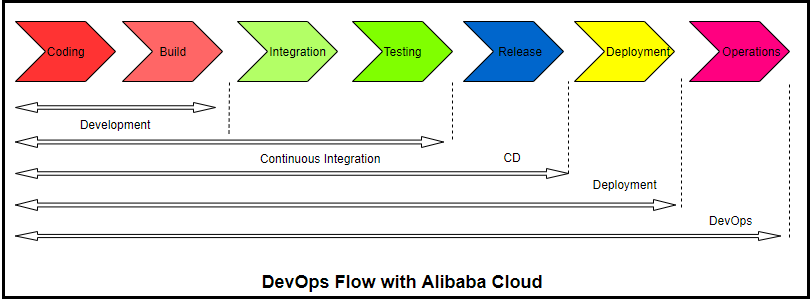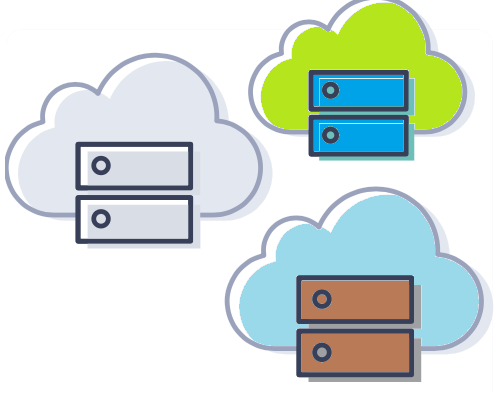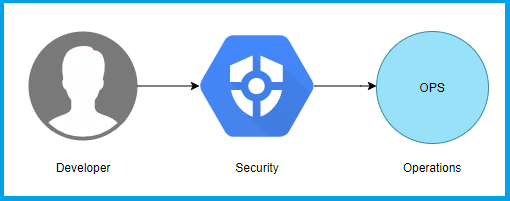By Raghav K.
Implementing DevOps as an integral part of your organization’s IT scope is now among the well-established practices. DevOps has been around for more than a decade, and it is time for it to begin its next stride. Today, many enterprises are considering DevOps as the go-to solution for an applications lifecycle infrastructure.
As an enterprise user, you may have adopted a multi-cloud environment or a DevOps pipeline. This article will help you understand the intricacies of DevOps and multi-cloud management for your pipeline. If you haven’t implemented both (DevOps and multi-cloud) or have implemented one, you can benefit from this article by implementing the practices we discuss.
DevOps and multi-cloud have a synonymous relationship. They can co-exist and benefit one another while increasing the productivity count. However, the combination of DevOps and multi-cloud is still uncommon. Most enterprises that have an established DevOps pipeline are still far away from implementing a multi-cloud setup.
IDC stated, “The worldwide DevOps software tools market stood at $5.2 billion in 2018. By 2023, market growth is expected to skyrocket to $15 billion.”
After a significant change in operational practices, industries and their trends underwent a considerable change with a new normal that suggests a larger workforce operating under remote work norms.
An additional report from IDC stated, The worldwide DevOps software tools growth rates in 2020 and 2021 have been significantly reduced, although they still show positive single-digit growth. A somewhat stronger recovery will take place in 2022 and 2023, although ongoing trends related to market consolidation, open-source, and infrastructure automation becoming more embedded in cloud infrastructure services will all impact longer-term growth trends.
DevOps introduces an efficient way to maintain and execute a distributed unified software development lifecycle. Applying automation to cut down the overall time taken from build to release is the key to a successful DevOps pipeline. Continuous Integration and Delivery channels can only work efficiently when every box is checked to maintain a standardized approach for SDLC.

2021 has started with more agile trends and practice predictions for the future. This is the perfect time to make the shift towards one of the suggestions listed below:
Multi-cloud and DevOps complement each other at different levels altogether. You can extract much more out of your solution if you connect the two properly. It is time to make the shift towards a more distributed and agile approach.
The build process in DevOps requires a faster cycle of development. Applications and services work with Continuous Integration and Delivery (CI/CD) with the help of agile development methodology and by implementing strong testing capabilities. You need a strategy to regulate security and operations covering all end points.
Standardization is the key to unlocking a host of features and benefits offered by DevOps and multi-cloud. Automation comes in second, especially within the testing and deployment phases of the pipeline. The third step is to closely monitor your DevOps pipeline and the cloud backend to make adjustments to unify the system further.


Organizations with an existing DevOps pipeline must create a strategy to develop more cloud-native applications. Scalability is another important aspect. Although multi-cloud provides enormous resource scaling, the distributed architecture makes it tricky to standardize resource orchestration and activate a synchronized environment for DevOps to leverage the resources properly.
Continuous Integration and Delivery (CI/CD) is now a necessity, and enabling the practice to achieve faster cycles is where organizations should be focusing. The utilization of proper tools is a necessity to deploy multiple target systems with code across environments. The perfect set of tools will allow an organization to leverage the benefits of each cloud platform and enable parallel code submission.
A multi-cloud strategy for an organization must include information about:
Managing multi-cloud security and compliance standards can be tricky. It is all about maintaining a set standard for an enterprise across cloud platforms. Alibaba Cloud has been working with the open-source community and the masses to develop and perfect tools and solutions for end-to-end security, including other cloud platforms and on-premise data centers. For more information, please see the Alibaba Cloud Anti-DDoS Premium service.

DevOps can acquire more security operation flexibility with a multi-cloud setup if it is deployed properly. DevOps with multi-cloud can help with:
In Part 2 of this blog series, I will focus on how you can establish a full spectrum DevOps operation and manage them within a multi-cloud environment. I will continue and elaborate on some of the most significant points I introduced in this blog. I will also discuss the significance of hybridization with a multi-cloud-based DevOps pipeline.

2,599 posts | 765 followers
FollowAlibaba Clouder - February 9, 2021
Alibaba Clouder - February 13, 2021
Alibaba Clouder - February 13, 2021
Alibaba Clouder - March 2, 2021
Alibaba Clouder - January 26, 2021
Alibaba Clouder - April 1, 2021

2,599 posts | 765 followers
Follow Microservices Engine (MSE)
Microservices Engine (MSE)
MSE provides a fully managed registration and configuration center, and gateway and microservices governance capabilities.
Learn More DevOps Solution
DevOps Solution
Accelerate software development and delivery by integrating DevOps with the cloud
Learn More Alibaba Cloud Flow
Alibaba Cloud Flow
An enterprise-level continuous delivery tool.
Learn More Function Compute
Function Compute
Alibaba Cloud Function Compute is a fully-managed event-driven compute service. It allows you to focus on writing and uploading code without the need to manage infrastructure such as servers.
Learn MoreMore Posts by Alibaba Clouder